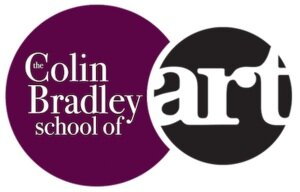New Demonstration! Constructing a Reggianini - "The Letter"
We're thrilled and excited to unveil the next Pastel Pencil Demonstration is "The Letter" by Vittorio Reggianini!The response to our new Demonstrations section in our Membership has been overwhelming and it's amazing how many people, even though it was designed as a demonstration, gave it a go and did a fantastic job.The demonstrations are designed to show how far you can push the pastel pencil medium, if you would like to follow along we definitely won't discourage you, but we will say it is difficult!Even if you do not decide to do the picture you will see so many techniques and learn a lot just by watching. The demonstration is 7 hours long split into 7 episodes.To view the demonstration, members login and go to the "Demonstrations" section under the Pastel Pencil heading. Alternatively, click here to go straight to it :) 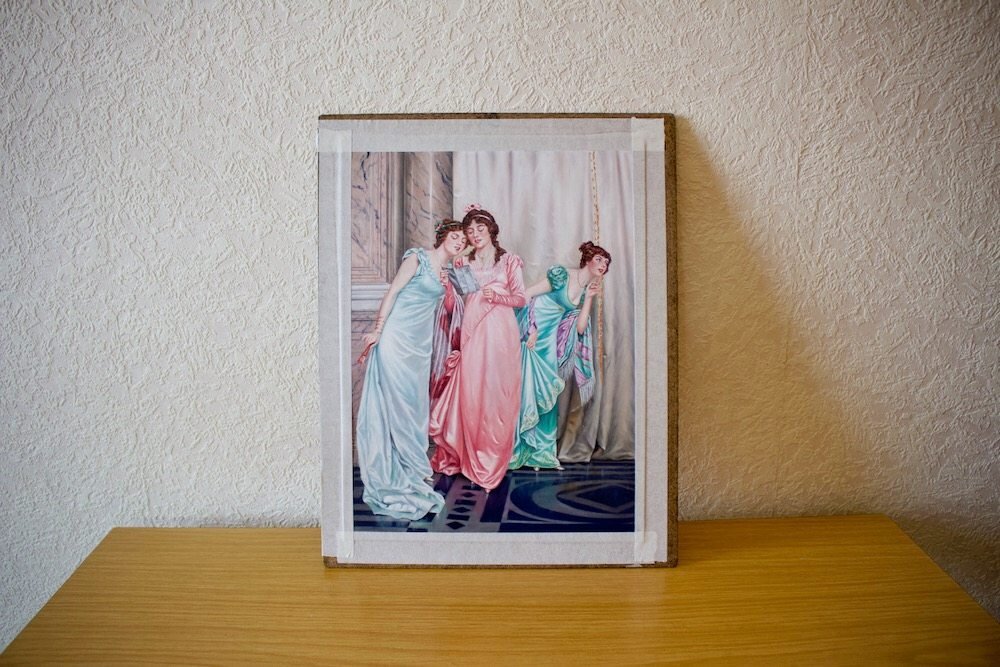 The Demonstrations section is available to ALL IN members only, so if you would like to upgrade or join us then just click here and select the ALL IN option.If you would like to hear more about the picture, why Colin chose this subject and the materials behind it, listen to our podcast below. We've also included a transcription of the show.
The Demonstrations section is available to ALL IN members only, so if you would like to upgrade or join us then just click here and select the ALL IN option.If you would like to hear more about the picture, why Colin chose this subject and the materials behind it, listen to our podcast below. We've also included a transcription of the show.
Podcast:
Transcription:
Stephen Bradley: Hello and welcome to Colin Bradley art cast, I'm Stephen Bradley.Colin Bradley: And I'm Colin Bradley.Stephen Bradley: Welcome everyone to this special introduction episode as with every new demonstration that we reveal, we're going to record a special edition of the podcast introducing you to the subject telling you a bit about it and this one is no different. It went down very well with the Constable, so we're doing it for the next one which we are really pleased to finally announce is Vittorio…Colin Bradley: Vittorio.Stephen Bradley: Reggianini.Colin Bradley: Reggianini yes.Stephen Bradley: It took us a while to get to say that name, didn’t it? But we got there. This is an incredible picture so let's kick off, the first question is, why did you choose this one as a demonstration? This picture.Colin Bradley: Right, well he's prolific if you go onto the Internet and bring the images up you’ll see there are…how he got time to do them all I don't know, they are so many and they're so detailed Steve and there's a lot to them. What I wanted to do is to minimise the amount of content because the problem otherwise it would take forever. First of all to demonstrate and to do much as I would have loved to have done it, it didn't seem very practical. So I looked through and it's mostly beautiful women I've got to say and there are a few men scattered about but mostly its women and I thought well what I really want to do is combine this with the portrait techniques, as well as the dresses…the satin dresses which is lovely and the decor was spectacular.Stephen Bradley: Very much of a ‘period’.Colin Bradley: Oh yeah, interesting the thing is it’s all 18th-century designs but he was born in the late Vic…in the Victorian era that was weird. So he's doing what I'm doing the other way around, I like… I like going back to the Victorian era a hundred plus years ago while he went hundred plus years ago when he was…it was quite amazing and we've got all the photographic reference in the Victorian times but he didn't have that, so where he got it from I don’t know. Anyway he was a very clever man and his pictures were exquisite, they are very popular they sell throughout the auction houses, big auction houses in the world and they sell for a lot of money and you can understand it too. So this was the idea, now I’d already done one before if you remember which everybody liked but I never dreamed that I could ever do one for the member site. It would have been too hard.Stephen Bradley: You picked a section before for the member site of a satin dress to demonstrate a technique of a satin dress, and I've got the picture that you did or a section of the picture because you'd cut it down.Colin Bradley: YeahStephen Bradley: --Of the lace makers.Colin Bradley: That's rightStephen Bradley: I've always been amazed by it, it was always a really incredible picture. So you had been familiar with his work before?Colin Bradley: Yes and you gave me the idea anyway if you remember when you were talking about whose pictures should I represent and demonstration set up, Monet and there’s about…I think it's about 9 I have actually done now. It might even be 10, yes it is 10, the last one I would just stand and so there are 10 spread out, it's going to spread out over the next couple of year’s folks you ain’t going to get them all at once. And then we…you said to me well, why don't you do a Reggianini and I thought oh that's a good idea, but I would have been put off because I thought people wouldn't be able to copy it, it's really hard. But as I'm doing the demonstration and this is primarily a demonstration we're not expecting people to follow it, it gives all our members and others who wanted to look at this an insight as to how one paster pencils can operate in an oil environment because everything else was oil originally, and two how they can see how I can tackle different fabrics like the dresses and the décor.Stephen Bradley: Fantastic, okay.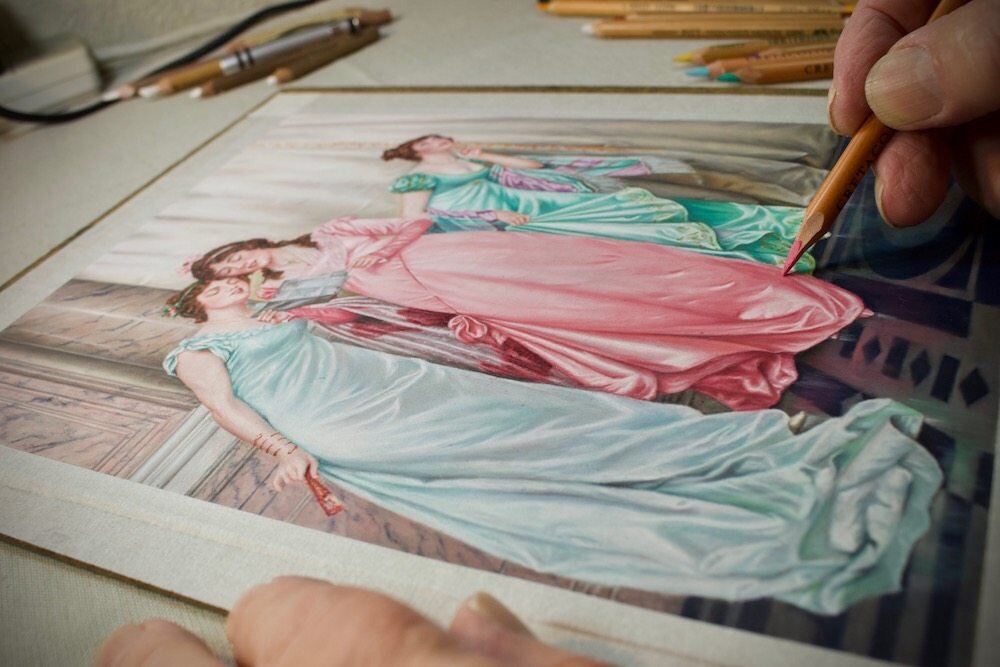 Stephen Bradley: The next question is, what techniques are people seeing in this picture that they would not have seen before?Colin Bradley: They’re seeing…just simply the curtains heavy drape curtains, now I can’t think of a picture where I have ever done anything like that before, where would you...and I found that really nice to do a floor shiny floor that you get in the palaces and the…Stephen Bradley: Like a marble floor.Colin Bradley: Yes, well yes it probably was actually a marble, yes. So that's another thing that they are going to see this time that they have not seen before. The marble on the wall there's a pillar, I remember mentioning this once before that I was amazed at and the wall was marble, but again never been done before but the satin dresses are the key to this, I loved doing them they were really difficult and people will see me struggling a bit but we pulled it off and three very pretty faces as well quite small. I couldn't do the picture much bigger than that, its just slightly smaller than a4 size but the original was probably twice, three times as big as that. So I had to minimise the amount of detail I could put in but nonetheless, it was still very detailed.Stephen Bradley: How difficult were these new techniques for you to do, so such as the dresses or the…sort of the reflective marble getting that reflective shiny surface, how difficult were they to achieve?Colin Bradley: Pretty hard, it was made easier because I was using the pastelmat and I don't think I…I did originally do it in…not that one but the original Reggianini in ingres and I found that hard, I found that harder than when I use the pastelmat. pastelmat gave you a kind of…it gives you the opportunity to build up more than you can with ingres. And this has helped me enormously, so though it was difficult it was made easier by that very fact I was using a pastelmat, a very responsive and it was a dark grey pastelmat that I was using. And it worked out really well and in the end, I was delighted with the way it actually turned out and people will see the finished result, a very good demonstration piece really.
Stephen Bradley: The next question is, what techniques are people seeing in this picture that they would not have seen before?Colin Bradley: They’re seeing…just simply the curtains heavy drape curtains, now I can’t think of a picture where I have ever done anything like that before, where would you...and I found that really nice to do a floor shiny floor that you get in the palaces and the…Stephen Bradley: Like a marble floor.Colin Bradley: Yes, well yes it probably was actually a marble, yes. So that's another thing that they are going to see this time that they have not seen before. The marble on the wall there's a pillar, I remember mentioning this once before that I was amazed at and the wall was marble, but again never been done before but the satin dresses are the key to this, I loved doing them they were really difficult and people will see me struggling a bit but we pulled it off and three very pretty faces as well quite small. I couldn't do the picture much bigger than that, its just slightly smaller than a4 size but the original was probably twice, three times as big as that. So I had to minimise the amount of detail I could put in but nonetheless, it was still very detailed.Stephen Bradley: How difficult were these new techniques for you to do, so such as the dresses or the…sort of the reflective marble getting that reflective shiny surface, how difficult were they to achieve?Colin Bradley: Pretty hard, it was made easier because I was using the pastelmat and I don't think I…I did originally do it in…not that one but the original Reggianini in ingres and I found that hard, I found that harder than when I use the pastelmat. pastelmat gave you a kind of…it gives you the opportunity to build up more than you can with ingres. And this has helped me enormously, so though it was difficult it was made easier by that very fact I was using a pastelmat, a very responsive and it was a dark grey pastelmat that I was using. And it worked out really well and in the end, I was delighted with the way it actually turned out and people will see the finished result, a very good demonstration piece really.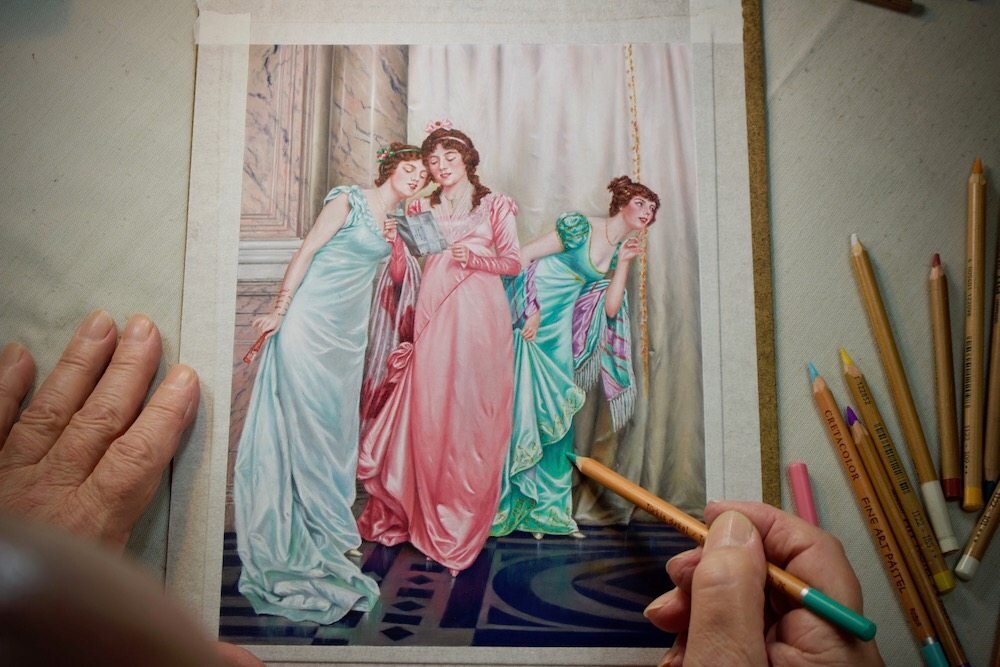 Stephen Bradley: How important were the cretacolors in this picture because this one, the constable is the first time we introduced a few cretacolors into the picture, they weren’t shining so much on the demonstration but since then we've included them a lot more and we're now selling them. I know in this picture you released, you used a lot more cretacolors.Colin Bradley: I did.Stephen Bradley: Explain the difference that made to the picture?Colin Bradley: It enhanced what I…the Faber-Castell pencils are great, everybody knows that I think the world of them. However, you're limited from the colour point of view so it was like finding in between colours all the time and yes it was quite right, it was quite a lot of those, I don't think I could have done it…I certainly wouldn’t have done it anywhere near as well as I did if I hadn't got the cretacolor. The vibrancy of some of the colours that are in the cretacolor was because they were a little softer was very intense and that helped me enormously not only with the faces and the portrait and the skin, because like the arms and so on, but with the dresses as well you could get a lovely vibrancy and that pulsated almost out of the picture and people will see that.Stephen Bradley: What struck me about this picture is how bright those dresses were.Colin Bradley: That's rightStephen Bradley: And that's the cretacolor, is it?Colin Bradley: Yes, that's largely responsible yes. Combination of the two, you have the two as a say it's like having some in between colours, I got…for instance I had a girl with 233, we're very familiar within 230. We are familiar with as one cretacolor that goes in between that, see what I mean… instead of having 2 colours I had 3 colours makes a big difference and it was the same with the pinks, I got a lot more pinks, with Faber-Castell I got maybe 5 pinks altogether. Well I've got another 5 cretacolors, so I had ten pinks now, can you imagine.Stephen Bradley: Yeah and with pastelmat being able to accept more layers.Colin Bradley: YesStephen Bradley: You were able to build that up.Colin Bradley: That's rightStephen Bradley: Yeah, how did you know when to stop building layers?Colin Bradley: That it is a question, that's a really hard question for me to answer because I don't really know, I think you've got to put that all down to experience. I used to be asked many years ago, how do you know when you've finished a picture? How do you know when you put your last colour on? Are you going to put another one on? it's instinctive, it comes with instinct you know it's right, because when you are looking at reference pictures mainly because I was looking at a reference picture with this…I can’t make it out up out my head, and when I knew what I was going to achieve so as I was building the colours up, I was getting there and suddenly I was there and once you reach that point you leave it alone, you move to the next one.And so many times when I was starting out on my art quest I used to over work a lot of my pictures. And then I used to tap myself a lot of times, why did you do that? Why did you use that colour? You didn't need to. Well, that teaches you because gradually you learn not to do that so instinct takes over, you know when you've done enough. You're quite right it is something that I'm sure will enter people's minds and also another thing though I've also heard people say to me and this was mainly in the class when I had classes, when I thought it was finished I did a couple of colours and it changed it again and I think that people will see this they will think I was finished now, hang on what is he doing? He is putting more colours on. You think, don't! Please don't put more colours you are going to spoil it but I don’t.
Stephen Bradley: How important were the cretacolors in this picture because this one, the constable is the first time we introduced a few cretacolors into the picture, they weren’t shining so much on the demonstration but since then we've included them a lot more and we're now selling them. I know in this picture you released, you used a lot more cretacolors.Colin Bradley: I did.Stephen Bradley: Explain the difference that made to the picture?Colin Bradley: It enhanced what I…the Faber-Castell pencils are great, everybody knows that I think the world of them. However, you're limited from the colour point of view so it was like finding in between colours all the time and yes it was quite right, it was quite a lot of those, I don't think I could have done it…I certainly wouldn’t have done it anywhere near as well as I did if I hadn't got the cretacolor. The vibrancy of some of the colours that are in the cretacolor was because they were a little softer was very intense and that helped me enormously not only with the faces and the portrait and the skin, because like the arms and so on, but with the dresses as well you could get a lovely vibrancy and that pulsated almost out of the picture and people will see that.Stephen Bradley: What struck me about this picture is how bright those dresses were.Colin Bradley: That's rightStephen Bradley: And that's the cretacolor, is it?Colin Bradley: Yes, that's largely responsible yes. Combination of the two, you have the two as a say it's like having some in between colours, I got…for instance I had a girl with 233, we're very familiar within 230. We are familiar with as one cretacolor that goes in between that, see what I mean… instead of having 2 colours I had 3 colours makes a big difference and it was the same with the pinks, I got a lot more pinks, with Faber-Castell I got maybe 5 pinks altogether. Well I've got another 5 cretacolors, so I had ten pinks now, can you imagine.Stephen Bradley: Yeah and with pastelmat being able to accept more layers.Colin Bradley: YesStephen Bradley: You were able to build that up.Colin Bradley: That's rightStephen Bradley: Yeah, how did you know when to stop building layers?Colin Bradley: That it is a question, that's a really hard question for me to answer because I don't really know, I think you've got to put that all down to experience. I used to be asked many years ago, how do you know when you've finished a picture? How do you know when you put your last colour on? Are you going to put another one on? it's instinctive, it comes with instinct you know it's right, because when you are looking at reference pictures mainly because I was looking at a reference picture with this…I can’t make it out up out my head, and when I knew what I was going to achieve so as I was building the colours up, I was getting there and suddenly I was there and once you reach that point you leave it alone, you move to the next one.And so many times when I was starting out on my art quest I used to over work a lot of my pictures. And then I used to tap myself a lot of times, why did you do that? Why did you use that colour? You didn't need to. Well, that teaches you because gradually you learn not to do that so instinct takes over, you know when you've done enough. You're quite right it is something that I'm sure will enter people's minds and also another thing though I've also heard people say to me and this was mainly in the class when I had classes, when I thought it was finished I did a couple of colours and it changed it again and I think that people will see this they will think I was finished now, hang on what is he doing? He is putting more colours on. You think, don't! Please don't put more colours you are going to spoil it but I don’t. Stephen Bradley: Spoiler alert it works out all fine in the end.Colin Bradley: YesStephen Bradley: That's fantastic.Stephen Bradley: So people that are watching this demonstration it's naturally from what you said it's going to be very challenging as was the Constable.Colin Bradley: YesStephen Bradley: A lot of people have done a really fantastic job of the Constable which proves…Colin Bradley: I am absolutely amazed.Stephen Bradley: Which is which is proof that people are more than capable of giving these pictures a go. What would your advice be to someone attempting this picture as you're demonstrating it following along with you?Colin Bradley: Well, first of all, I would tell them to put their expectations way down, don't expect to do what I've done you are not going to do it. But have to go at it and enjoy yourself, enjoy every brushstroke or pencil strokes should I say and by doing just that you will get a result. It may not be as good as you want it to be and that would be as they impossible but you will learn so much from it but we're not really expecting people to do it, the whole idea of this was to show people how it can be done and they will be as I was when I look at…because I look at all the pictures back as you know all the video I look back at it and I'm quite amazed at what I've done, because when you're in the midst when you're doing it you go into a kind of another zone, you are not really taking in exactly what you're doing you're just doing your job, but when you look at it back I'm then looking like a viewer would look at it and I think how did I do that and sometimes I can't believe that I've added another couple of colours when it looks good to me. So it's quite interesting, I think this is where if you're interested in art and you're interested in how thing is done you'll enjoy this and you will all of the others as well because they're all the same, they have all got that magic to them.Stephen Bradley: So just even if you don't want to have a go, just watching this is going to teach you so much.Colin Bradley: Oh absolutely oh yes I guarantee, it will be in your head even if you take a couple of things away, I think next time I try that portrait or next time I try that dress or next time I do that background or next time I do that shoe I'm going to remember to do that so you can take that away with you.Stephen Bradley: Fantastic, okay thanks, dad. This is going to…I think this is going to introduce the subject really well to people and as with the Constable we hope if you do give it a go you let us know what you thought and how you got on, send us your work and we look forward to sharing more demonstrations over the years because we have got a lot.Colin Bradley: Yeah we have got a lot.Stephen Bradley: But this one is one that we…this was a few down the line that we've brought forward because…Colin Bradley: That’s rightStephen Bradley: --We thought it was such an extraordinary piece that we wanted to bring it closer up at the timeline, so we will do that with other projects that we feel are…that we feel need to be shared sooner. Thanks, dad, thanks everyone for listening I'm still Stephen Bradley.Colin Bradley: And I'm Colin BradleyTogether in unisonEnjoy your week.
Stephen Bradley: Spoiler alert it works out all fine in the end.Colin Bradley: YesStephen Bradley: That's fantastic.Stephen Bradley: So people that are watching this demonstration it's naturally from what you said it's going to be very challenging as was the Constable.Colin Bradley: YesStephen Bradley: A lot of people have done a really fantastic job of the Constable which proves…Colin Bradley: I am absolutely amazed.Stephen Bradley: Which is which is proof that people are more than capable of giving these pictures a go. What would your advice be to someone attempting this picture as you're demonstrating it following along with you?Colin Bradley: Well, first of all, I would tell them to put their expectations way down, don't expect to do what I've done you are not going to do it. But have to go at it and enjoy yourself, enjoy every brushstroke or pencil strokes should I say and by doing just that you will get a result. It may not be as good as you want it to be and that would be as they impossible but you will learn so much from it but we're not really expecting people to do it, the whole idea of this was to show people how it can be done and they will be as I was when I look at…because I look at all the pictures back as you know all the video I look back at it and I'm quite amazed at what I've done, because when you're in the midst when you're doing it you go into a kind of another zone, you are not really taking in exactly what you're doing you're just doing your job, but when you look at it back I'm then looking like a viewer would look at it and I think how did I do that and sometimes I can't believe that I've added another couple of colours when it looks good to me. So it's quite interesting, I think this is where if you're interested in art and you're interested in how thing is done you'll enjoy this and you will all of the others as well because they're all the same, they have all got that magic to them.Stephen Bradley: So just even if you don't want to have a go, just watching this is going to teach you so much.Colin Bradley: Oh absolutely oh yes I guarantee, it will be in your head even if you take a couple of things away, I think next time I try that portrait or next time I try that dress or next time I do that background or next time I do that shoe I'm going to remember to do that so you can take that away with you.Stephen Bradley: Fantastic, okay thanks, dad. This is going to…I think this is going to introduce the subject really well to people and as with the Constable we hope if you do give it a go you let us know what you thought and how you got on, send us your work and we look forward to sharing more demonstrations over the years because we have got a lot.Colin Bradley: Yeah we have got a lot.Stephen Bradley: But this one is one that we…this was a few down the line that we've brought forward because…Colin Bradley: That’s rightStephen Bradley: --We thought it was such an extraordinary piece that we wanted to bring it closer up at the timeline, so we will do that with other projects that we feel are…that we feel need to be shared sooner. Thanks, dad, thanks everyone for listening I'm still Stephen Bradley.Colin Bradley: And I'm Colin BradleyTogether in unisonEnjoy your week.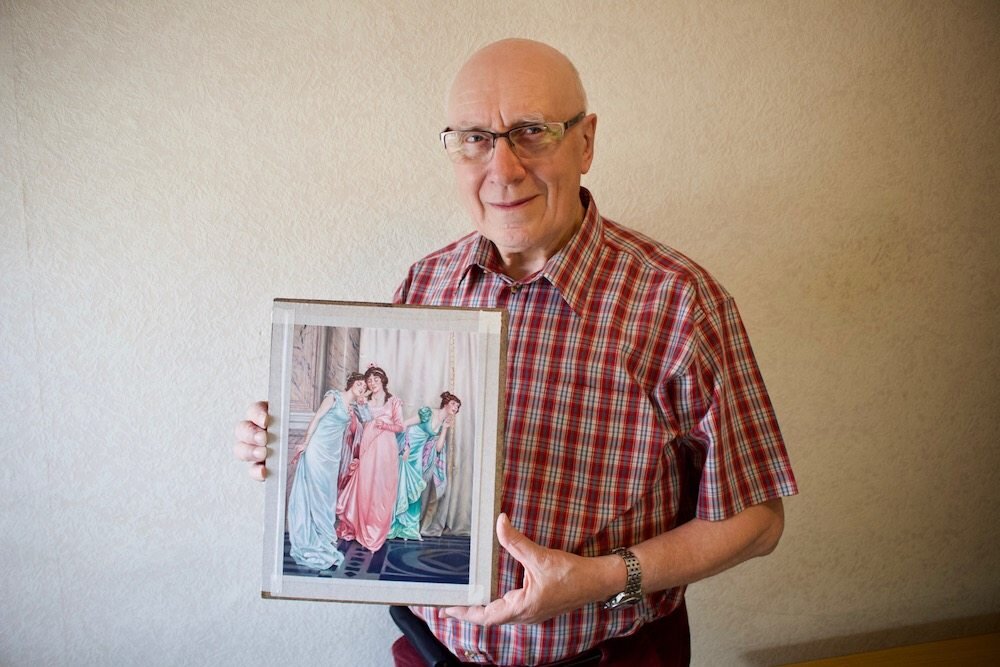
Membership
If you want to learn more about our membership and how you can get:
- Access to ALL our courses
- Feedback on your Artwork from Colin
- Access to this new Demonstration
- 80 Written Instruction Packs (Worth £239)
- 10 E-Books (Worth £29)
- 33 Exercise Sheets (Worth £26)
Click here to learn more.For those that are already members we hope you enjoy the new Demonstration and we can't wait to show you the next one![fusion_tagline_box backgroundcolor="" shadow="no" shadowopacity="0.7" border="0" bordercolor="" highlightposition="left" content_alignment="left" link="https://colinbradleyart.com/draw-stunning-pastel-pictures-with-our-free-lessons/" button="FREE COURSES" linktarget="_self" modal="" button_size="" button_type="flat" button_shape="square" buttoncolor="default" title="Try Our Free Courses" description="Interested in trying Pastel Pencils? We have free courses for drawing Animals, Landscapes and Portraits." margin_top="" margin_bottom="" hide_on_mobile="small-visibility,medium-visibility,large-visibility" class="" id="" animation_type="" animation_direction="left" animation_speed="0.3" animation_offset=""][/fusion_tagline_box]

